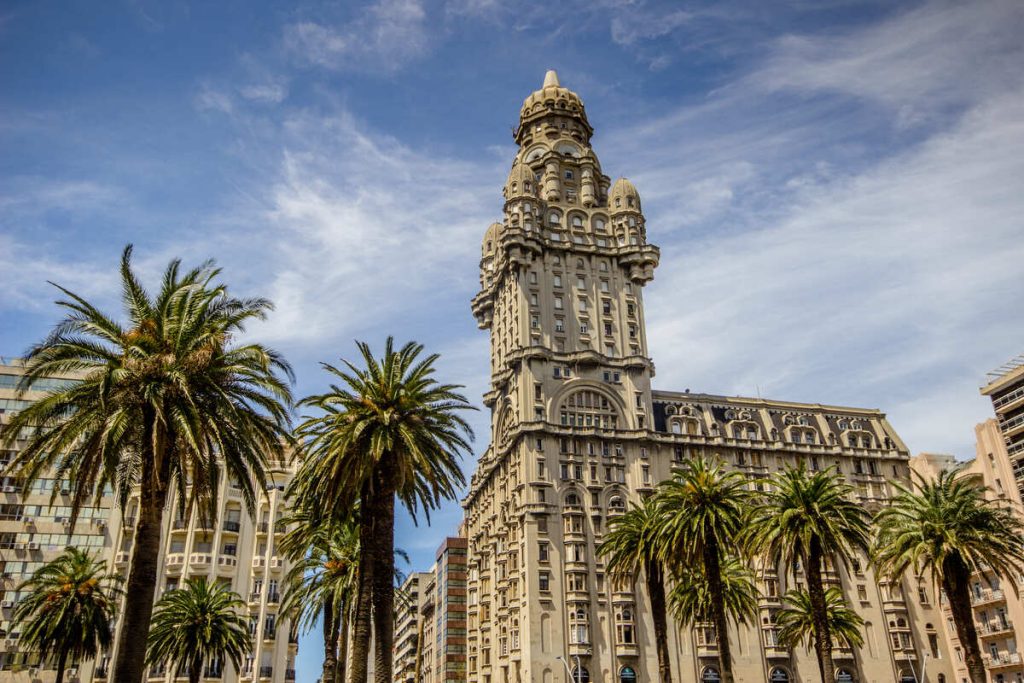Travel Guide
Move Over Argentina! This South American Country Is Just As Safe With Fewer Tourists
Last Updated
The birthplace of tango and the proud home of chef-favorite Bife de Chorizo, Argentina is the number one destination for tourists heading to South America, not only because the culture and cuisine are unmatched, but because it’s very safe for foreigners:


Compared to its neighbors, Argentina enjoys lower levels of violent crime, scamming practices, and even pickpocketing, making it a preferred destination for first-time visitors to the nether half of this hemisphere, but it’s not the only country in the region to be considered low-risk.
In fact, a tiny country sandwiched between Argentina and Brazil, with an equally vibrant culture and a food scene to rival Buenos Aires, is just as safe (except it’s mostly ignored by tourists):
Welcome To Seriously-Underrated Uruguay


One of the lesser-known and smallest countries in South America, Uruguay is overshadowed by the far-larger states it shares borders with, namely Argentina and Brazil.
Call it a lack of connectivity or lack of interest, but country-hoppers tend to bypass it altogether.
In a way, we don’t blame them, as the largest international airport in Uruguay, the mid-size Carrasco, hosts one seasonal flight from Miami in the United States, and its only Transatlantic link is via Madrid; on the one hand, it means it’s harder to get to, on the other… you guessed it:
Tourism levels are comparatively low.


Last year, the country registered 3.8 million tourists, and though that’s a 55% increase year-on-year, it is still far behind Argentina, which welcomes an average––flip the numbers––8.3 million per year. Long story short, large swathes of Uruguay remain undiscovered.
But what are tourists missing out on, and does South America’s second-largest sovereign state have anything to offer at all?
Vibrant Hispanic Culture


Most travelers flock to South America for the fascinating culture, and we’re glad to report Uruguay is no exception to the rule: while street markets and ethnic native cuisine may be harder to come upon––most Uruguayans are just, hem, of European heritage––their Hispanidad is undeniable.
Most modern-day Uruguayans are descendants of migrants who would have arrived from the Iberian Peninsula, Europe’s sunniest part, where both Portugal and Spain are located, so it’s no surprise strong Southern European customs have survived.


Whether it’s the lively Spanish spoken in the streets, with its own distinct Uruguayan accent, or the eclectic cuisine—heavily influenced by Spain, Portugal and Italy, we must say—you’ll find yourself falling in love with this offbeat South American gem in no time.
Incredible Cuisine
To all our fellow foodies out there, we’ll keep it real with you: Uruguayan cuisine does not have a particularly distinct feature, relying heavily on its European origins, as well as regional food imported from border areas of Argentina and Brazil.


That’s not to say it’s not melt-in-your-mouth kind of stuff: if you’re keen on trying asado (yep, they also have them there), you should make sure you stop by La Pulperia in Montevideo or the up-and-coming La Cocina de Pedro, for the most tender beef you’ll ever sink your teeth into.
Craving Mediterranean instead? Uruguay stays true to its Southern European origins, and from paella to tortillas to patatas bravas to pasta, the list of Spanish-style tabernas and Italian-run trattorie is endless, especially if you’re based in the capital.
An Exciting Capital City


Speaking of which, Montevideo may well be one of the most underrated city breaks in South America, with its host of museums, classic plazas fringed by alfresco restaurants and bars, stately architecture, and lively waterfront.
Though not as elegant as Buenos Aires’ Haussmann-modeled city center, the local Ciudad Vieja has its own unique appeal, mixing colonial, art deco and neoclassical buildings, and one could argue Mercado del Puerto’s steakhouse selection is superior to that of the rival capital’s Puerto Madero.


Buenos Aires nightlife is nothing short of riotous, but Montevideo’s should not be underestimated, either.
Just know that if you’re looking for a more Bohemian atmosphere, bar-lined Pocitos is the place to be, not the more traditionalist downtown area.
A Host Of Colonial Treasures
Uruguay has colonial towns dating back centuries, including the charming Colonia del Sacramento, a cobbled settlement straddling the banks of the historic Río de La Plata, just opposite Buenos Aires in Argentina.


Founded by the Portuguese, it is one of Uruguay’s two UNESCO World Heritage Sites, recognized for its rows upon rows of colorful low houses, and well-maintained historic center, that’s been left virtually untouched in over three centuries.
Quaint, colorful Carmelo, surrounded by family-owned vineyards, is not to be missed, either, and if you’re wondering how life unfolds by the Atlantic, fishing port La Paloma, and national surfing capital La Pedrera are two of the top picks for a sun-drenched coastal getaway.


It Is Home To The ‘Miami Of The South’
Beachfront stays, a yacht-dominated marina, luxurious casinos and duty-free shopping: welcome to Punta Del Este, or how the industry likes to refer to it, ‘Miami of the South‘, and Uruguay’s leading resort destination.
Located at the tip of a narrow peninsula jutting out into the Atlantic, Punta Del Este is every high-income Uruguayan’s go-to summer destination if they’re not jetting away abroad, boasting a highly-developed hospitality and entertainment scene, and being home to national treasure Casa Pueblo.


For the average American, Punta Del Este is one of the most affordable coastal resorts south of the Equator line, with overnights at the five-star Grand Hotel costing as cheap as $137, while bungalow-style stays at Il Belvedere start from only $181 per night this summer.
Uruguay Is Safer Than Most South American Countries
Last but certainly not least, Uruguay is by no means the safest country in the world for tourism, but within its geopolitical context, it is relatively safe: when compared to neighboring Brazil, one of the riskiest countries to be a tourist in South America, crime levels are a significant 43% lower.


Crime still occurs, particularly in large urban centers like Montevideo and Punta Del Este, but it’s likely to take place in the form of pickpocketing during the day and other types of petty crime during the evening, mostly in tourist-frequented zones.
According to the U.S. State Department, Americans are not required to reconsider nor refrain from traveling to Uruguay, but they must exercise increased caution due to the reasons outlined above, similar to a majority of tourist destinations worldwide.
↓ Elevate Your Travel↓
Sign Up Now For Travel Off Path Premium! No ads, VIP Content, Personal Travel Concierge, Huge Savings, Daily Deals, Members Forum & More!


✈️Join Our Travel Off Path Community Forum: Where travelers unite, ask questions, share experiences and even find like-minded travel buddies!
SUBSCRIBE TO OUR LATEST POSTS
Enter your email address to subscribe to Travel Off Path’s latest breaking travel news, straight to your inbox.
This article originally appeared on TravelOffPath.com
Opinions expressed here are the author’s alone, not those of any bank, credit card issuer, hotel, airline, or other entity. This content has not been reviewed, approved or otherwise endorsed by any of the entities included within the post.

